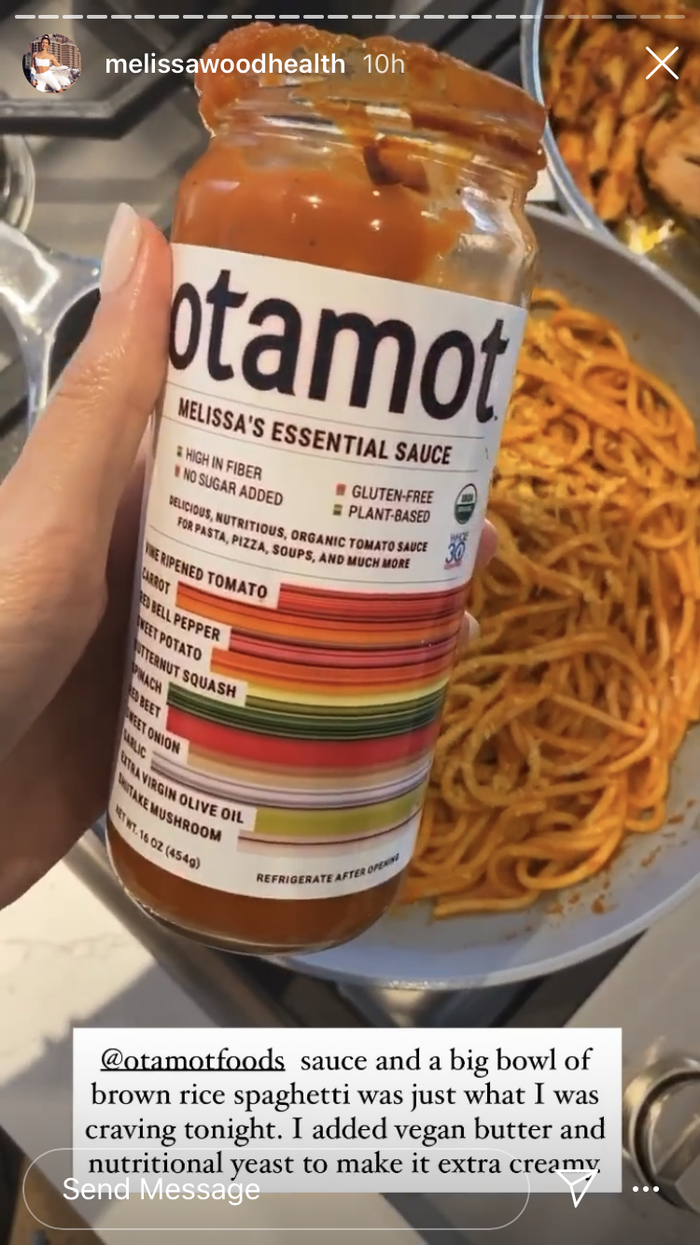Brands plus influencers: How to make the magic happen
Brands and influencers want longer-term partnerships but understanding the nuances of a business partnership is important.
December 17, 2020

Natural food brands want to connect with influencers but creating a collaborative partnership can be complicated.
More than a billion monthly active users are on Instagram. With more people cooking from home during the pandemic, many are turning to influencers for guidance.
“The audience is getting more sophisticated and wants an organic connection between an influencer and a brand, not someone holding up a bottle of something and saying you should buy this,” says Laurie Buckle, CEO and founder CookIt Media, an influencer marketing agency brand partnership based in Los Angeles.
That’s the reason New Hope Network created the New Hope Network Influencer Co-op, a community of more than 500 health and wellness influencers who want to connect with brands in the natural food industry. After the cancellation of Natural Products Expo West 2020, Hope Network launched #InfluencersMakingLemonade program, a standalone event, to connect would-be exhibitors with registered social media influencers.
“We want to work with influencers who truly believe in the products they share and are authentic with their audience,” says Chris McGurrin, manager of influencer programs for New Hope Network.
Here’s how brands and influencers make the magic happen.
Create a connection
Before Andrew Suzuka, CEO of Otamot Foods, launched his Brooklyn-based company in March 2019, he purchased a $5,000 custom label printer to customize individual jars of organic tomato sauce.
Suzuka approached 50 influencers on Instagram, contacting each one with a personalized note about a specific post and why he liked it. He then sent samples of his sauce in jars, individually labeled with the influencer’s name. Suzuka included a letter personally thanking each influencer for taking the time to try the sauce and shared the story of how the sauce was inspired by his daughter Evelyn who he wanted to eat more vegetables.
Suzuka now works with more than 1,000 influencers through the #SauceBoss program, a handful who are paid. “I knew there was a couple of ways to approach influencers,” he says. “But I didn’t want to pay them a lot of money to just buy their pretend enthusiasm for a product.”
To track the return on investment, Suzuka will give discount codes and a commission on people using that discount code. “Building actual connections with influencers will go a longer way,” Suzuka says.
His approach personally resonated with Avra Epstein, founder of Love Wild Live Free, a vegan lifestyle blog with more than 10,000 Instagram followers who collaborated with Otamot Foods on a vegan pizza bagel recipe she created.
“Any time a brand does something more personal it resonates,” Epstein says.
Make sure there is alignment

“I don’t love it when brands come at you, and you’ve never heard from them before, they don’t follow you, they don’t like your stuff and they don’t know anything about me,” says Krysten Dornik of Krysten’s Kitchen who blogs about her gluten-free, mostly paleo and Whole30 lifestyle and has nearly 35,000 followers on Instagram. “I’ve never tried their product and they say, ‘Hey let’s collab and I will send you product in exchange for a post.'”
Brands will have more success if they approach an influencer and offer to send a few items with an offer to talk afterward.
“That’s a much better approach,” Dornik says, who wants to try a brand first—and to make sure it’s something she can even consume—before considering a potential collaboration.
McGurrin suggests researching an influencer to make sure a partnership is potentially a good fit before starting to communicate. Look at the branding of the influencer’s website and social media. Does the look and feel of that brand covey a message that aligns with your audience?
Review sponsored content posts and see if an influencer is promoting products that are relevant to your product and brand. If the influencer is already promoting a product that is a competitor’s, then the partnership might not be a good fit, especially if there is an exclusivity contract.
“Brands want to work with influencers who like their product,” Buckle says. “Influencers want to work with brands that appreciate what they do. Everyone can have that conversation long before there’s any kind of paid partnership.”
Plan out goals and objectives
Before approaching an influencer, brands need to conceptualize what they hope to achieve with an influencer marketing campaign. Think about goals and objectives, Buckle says. Understand what success looks like.
Will compensation be offered? If so, how many posts will be required? Will it include a recipe and what is the timeline? “It’s all about relationship building,” McGurrin says. “And the communication needs to be clear.” That includes sharing any do's and don’ts of regulatory compliance claims.
Create a trackable strategy
Determine key performance indicators, Buckle says, including:
Conversions (driving growth and sales).
Brand awareness and reach (impressions are a good thing to measure here).
Engagement (everything from likes and shares to comments and clicks).
Consider creating an affiliate program, which allows influencers to promote a brand’s products or services while earning a commission based on clicks or sales they generate. This can be done in the form of unique discount codes and affiliate links.
Collaboration is key
For an influencer to want to connect, a brand needs to be willing to “pull back the curtain,” Dornik says. Share stories about the team and what the brand is working on, she says, to help influencers share a brand’s story with their audience on social media.
Until recently, many brands thought they could simply write up a brief and tell the influencer what to do with an outline, Buckle says. But that doesn’t work, she says. There needs to be collaboration.
Brands may want to review a post before it’s published, but the best ones ultimately allow the influencer to use their creativity to guide the audience they’ve curated. “That means letting the influencer connect with their audience and do what they know how to do best,” Buckle says.
Create a budget and compromise
Most brands try not to pay influencers and most influencers want to be paid for the time it takes to create their content.
“Sending over products to people is a great strategy to build some awareness,” Buckle says. “But it doesn’t promise anything. Influencer marketing promises you will get results, you will have analytics, you will have a better understanding of what is happening on the other side.”
Budgets and contracts between influencers and brands widely vary based on engagement and the number of followers. Ranges can vary, but typically influencer categories range from nano (0–15,000 followers), micro (15,000–50,000 followers) and macro influencers (above 50,000 followers). Some of the larger influencers are represented by talent agencies that may ask for thousands of dollars (or much higher) for a single post.
Ideally, brands should dedicate 10–15% of their marketing budget to influencer marketing, McGurrin says.
That’s far more than many natural food companies are doing. A recent New Hope Network survey of nearly 100 natural food brands found 40% dedicate 1% to 5% of their marketing budget to influencer marketing and 26% don’t have a budget dedicated to influencer marketing.
For brands to find success, there has to be a financial investment, Buckle says, akin to paying for traditional advertising.
“What people need to realize is influencer marketing is advertising, not public relations,” Buckle says. “It’s advertising with human beings instead of pages in a magazine. It’s a business and needs to be treated that way.”
About the Author(s)
You May Also Like




